- Small Dog Place Home
- Lifestyle
- Photographing Your Small Dog
Photographing Your Small Dog And Get Professional Results
Photographing Your Small Dog by Karol King |Updated 10-18-2023
The average person takes 20 photos a day on their smartphone or camera. If you're a dog owner, there's a fair chance that your camera reel has many pictures of your favorite canine companion.
Taking professional-looking photos of your dog isn't easy. However, motion shots can often be blurry or lacking in detail. Close-up pictures are difficult to take if you want lots of definition- the hardest dogs to snap in close-up are the black ones.
With a few tips and tricks, though, you can take professional pictures of your dog that you will want to frame and put on your wall.
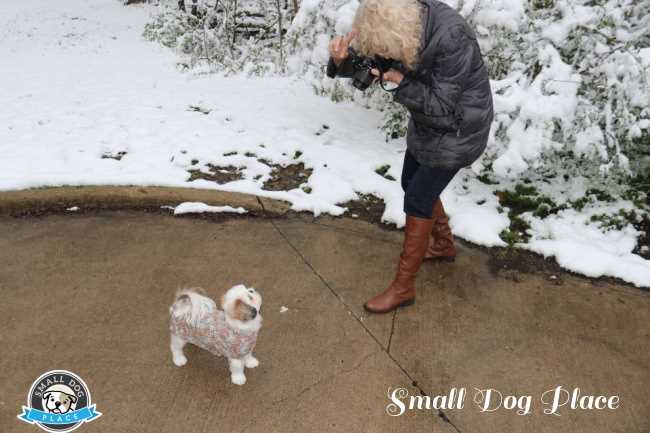 Photographing Your Small Dog
Photographing Your Small DogUsing Lenses and Manual Focus
If you are using a digital camera to take photos of your dog, then the addition of a wide-angle lens to your kit will help you take fun landscape pictures. Including a few different lenses in your fundamental camera equipment means that you can take better photos outside or even in confined spaces.
It will give you more options in different lights and greater artistic choice when it comes to composition. A wide-angle lens with a short focus will give your dog photos a really wide composition.
This can create humor in a photo of a small dog, especially if you are trying to capture them on the move or playing with a toy. Suppose you are using a smartphone or modern DSLR camera.
In that case, you will probably be used to taking quick snaps with autofocus. However, using manual focus, particularly if you are taking portraits and still shots, will help you to get definition of your dog's face and eyes. Manual focus will give you full control of the pictures that you are taking.
Focus on the Eyes
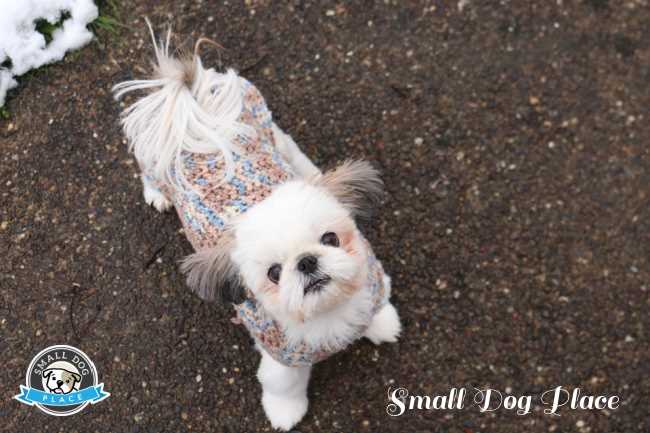 Focus on your dog's eyes for an interesting photo.
Focus on your dog's eyes for an interesting photo.The eyes are definitely the window to the soul when it comes to dogs. They are extremely emotive, and help to convey their feelings to us.
Focusing on the eyes when you are taking portraits of your dog will help to give your photos depth. Using a wide aperture of f/2.8 will help to enhance the eyes, giving detail to the reflections.
If you are taking a series of photos, leave the portraits until the end of your session when your dog has had a chance to burn off a little energy. This is particularly important if you have a very active breed like a Jack Russell.
If you want to produce professional-looking studio portraits of your dog featuring the eyes, use a dark-colored or black background if you have a light-colored dog like a West Highland Terrier.
You should use a white background if you have a black dog though. You don't need to buy a backdrop: you can easily make one with some paint and card, or just some fabric draped over a couple of chairs.
A very cheap backdrop can be created using a couple pieces of poster board purchased from a hobby shop or office supply store. A plain background will put the focus on your dog and give your photo a sense of depth.
Using Burst Mode
Burst mode, which is found on many smartphones, is invaluable when taking photos of an animated and happy dog.
Often you won't be able to compose a shot during your photography session, but using burst mode means that you will be able to capture many spontaneous images.
This is particularly handy if your dog is on the move. You may find that you get a better variety of expressions and angles, and sometimes you will even find the photos are funny.
Make the Most of Natural Light
If you are out walking with your dog a lot, you will have noticed that they look great in certain lights. In particular, early sunrise will create a golden and hazy look in your portraits, giving them atmosphere.
The hour before sunset is also a great time of day to take photos of your dog, and you can also create some humorous images when the shadows are long.
You should, however, avoid direct or harsh light when you are taking photos; this will be an issue particularly in the middle of the day in the summer months.
Distraction Techniques
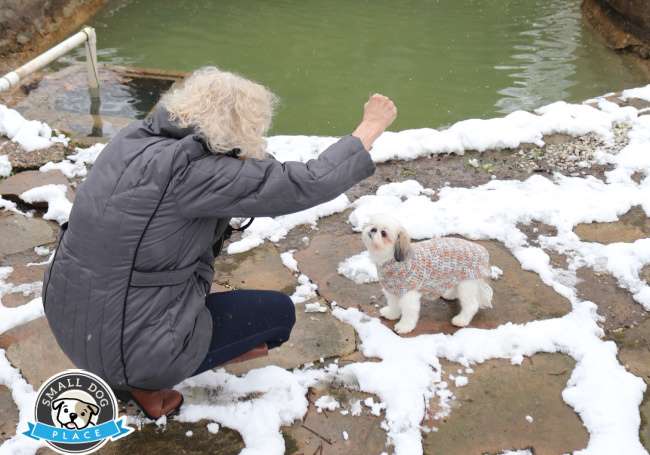 Food treats or toys make great distractions and work well when photographing your small dog.
Food treats or toys make great distractions and work well when photographing your small dog.As if taking photos of your dog wasn't hard enough, you will also be dealing with a subject that is animated, lively, unpredictable, and often on the move.
Unless they are asleep or extremely calm, it is not always easy to get a clear and defined photo of a dog. If you're having a photography session with them, it will be helpful to have a few distraction techniques.
Many small dog breeds, such as the King Charles Spaniel, are very toy-oriented, and are easily led by squeaky toys. You can use your toy to get your dog's attention or move their gaze in different directions. A few dog treats will also be helpful if you want your dog to pose in certain positions - for example, paw up or lying down.
If you have a dog breed that is neither toy or food motivated, sometimes a novel approach may be needed. Consider a cat toy with a bell or feather on a stick for these hard to distract breeds.
Sometimes all it takes is a very tasty treat such as a sausage or hot dog that is hard to resist for most dogs.
Different Camera Angles
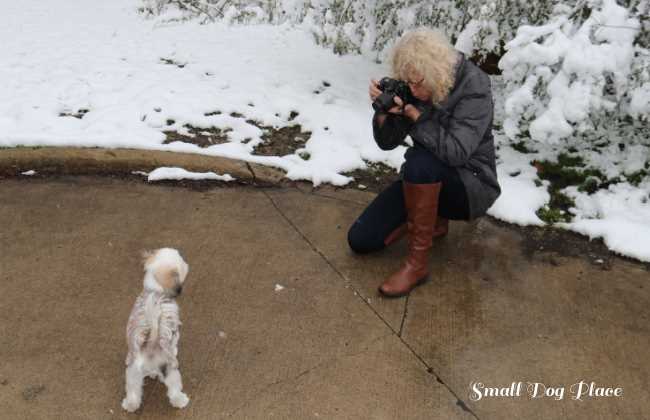 Try focusing on your dog from above, at eye level, and looking up at your dog.
Try focusing on your dog from above, at eye level, and looking up at your dog.Most photos that we see on Instagram or Facebook are done using a smartphone directly looking down at the dog. It's obviously the easiest way to take a photo but consider changing your angles. The top photo on this page was taken in a standing position looking down at the dog, but you can also get great photos by shooting from the eye level of your dog.
This means stooping or knelling if you are capturing a great photo of your small dog. Looking up at your dog who is sitting on a table or counter also makes an interesting shot.
Know When to Quit
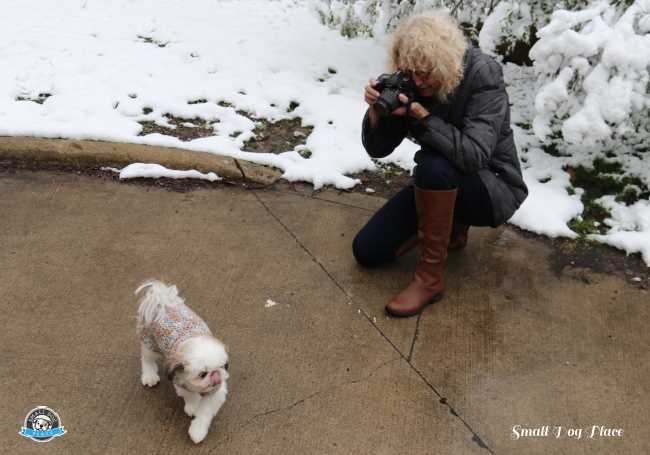 When photographing your small dog, know when it's time to quit.
When photographing your small dog, know when it's time to quit.All camera shoots must come to an end eventually, and it is always better to end your session on a high note. Dogs are very good at letting you know when they have had enough. Watch your dog's body language. Signs of stress include:
- Yawning
- Turning Away from the Camera
- Licking their Lips
If you see any of these tell-tale signs, give your dog a treat, praise and put away your camera until next time. Your dog will be much more likely to cooperate the next time you decide you want to photograph your small dog.
Last Words about Photographing Your Small Dog
Taking photos of dogs is not always easy, particularly if they are very active. But with a few tricks, you can get some great action shots and portraits that really reflect your small dog's personality. Don't forget the editing process.
Sometimes you can turn an OK photo into a fabulous one with just a little editing. Who knows, maybe photographing your small dog may be your next favorite hobby!
Photographing Your Small Dog: Pin for Future Reference
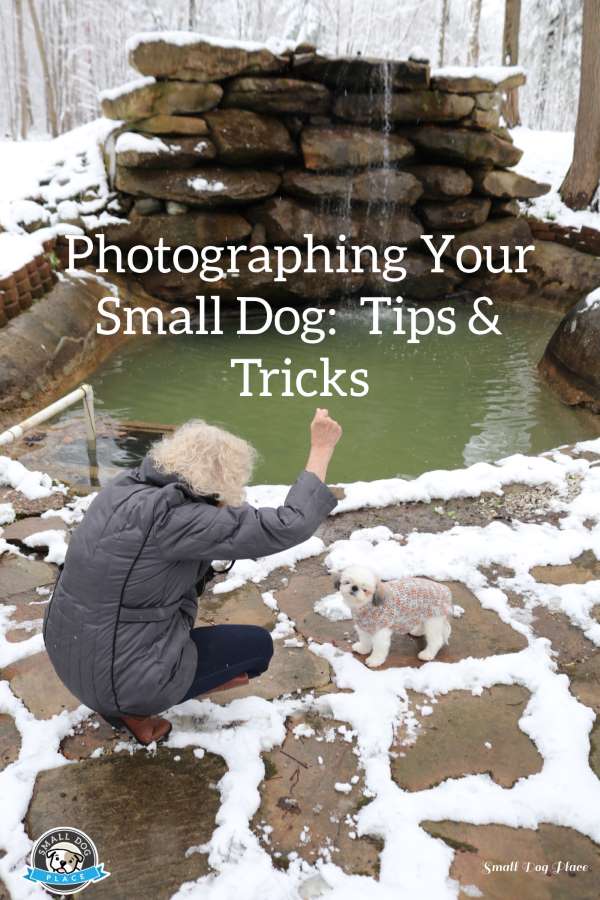 Photographing Your Small Dog: Tips and Tricks: Pin for future reference
Photographing Your Small Dog: Tips and Tricks: Pin for future referenceAuthor Bio: Karol King
Karol is an animal lover who has dedicated her life to helping dogs to find a safe and happy home. She now works as a freelance writer, which is her passion, and has the freedom to spend more time at home with her wonderful family."
More Articles by Karol King
Improve Indoor Air Quality: Could the Air In Your Home Make Your Dog Sick?
Traveling With Small Dogs: Tips for a Safe Trip
Exercising and Bonding with Your Small Dog: 7 Tips to a Successful Attachment
Entertaining Your Small Dog All Year Long
About Janice (author and voice behind this site)
Janice Jones has lived with dogs and cats for most of her life and worked as a veterinary technician for over a decade. She has also been a small-breed dog breeder and rescue advocate and holds academic training in psychology, biology, nursing, and mental health counseling. Her work focuses on helping dog owners make informed, responsible decisions rooted in experience, education, and compassion.
When not writing, reading, or researching dog-related topics, she likes to spend time with her six Shih Tzu dogs, her husband, and her family, as well as knitting and crocheting. She is also the voice behind Miracle Shih Tzu and Smart-Knit-Crocheting
Does This Article Deserve Your Thumbs Up?
We always appreciate your support and encouragement. Your thumbs up means so much to us. Please like this article.
If you find this page or any page on Small Dog Place Helpful, or useful in anyway, I'd love it if you would click the small heart found on the bottom right of each page.
You can also share or bookmark this page -- just click on the:

Free Monthly Newsletter
Sign Up for Our Free Newsletter and get our Free Gift to You.
my E-book, The Top 10 Mistakes People Make When Choosing a Dog (and how to avoid them)







